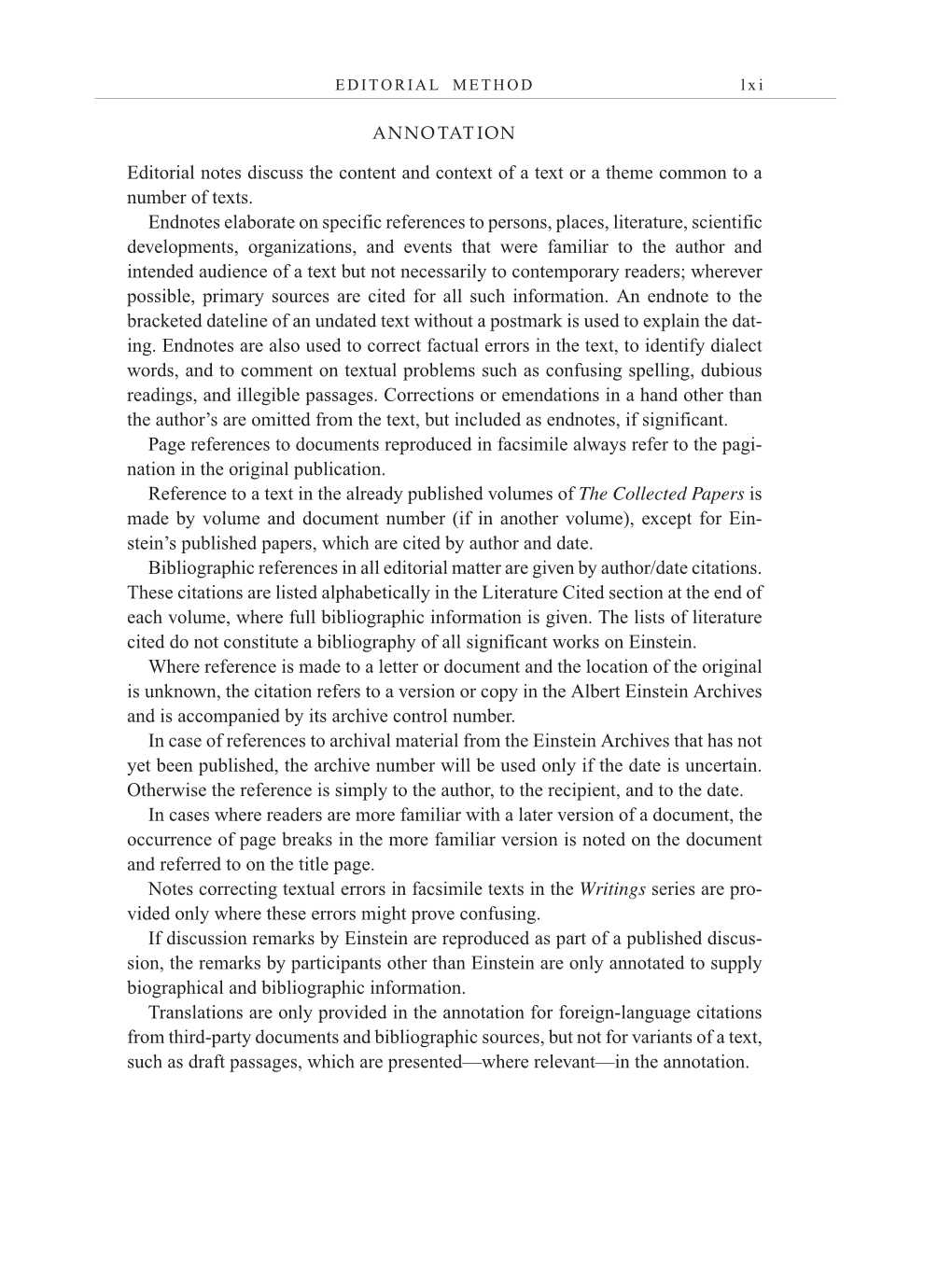EDITORIAL METHOD l x i
ANNO TAT ION
Editorial notes discuss the content and context of a text or a theme common to a
number of texts.
Endnotes elaborate on specific references to persons, places, literature, scientific
developments, organizations, and events that were familiar to the author and
intended audience of a text but not necessarily to contemporary readers; wherever
possible, primary sources are cited for all such information. An endnote to the
bracketed dateline of an undated text without a postmark is used to explain the dat-
ing. Endnotes are also used to correct factual errors in the text, to identify dialect
words, and to comment on textual problems such as confusing spelling, dubious
readings, and illegible passages. Corrections or emendations in a hand other than
the author’s are omitted from the text, but included as endnotes, if significant.
Page references to documents reproduced in facsimile always refer to the pagi-
nation in the original publication.
Reference to a text in the already published volumes of The Collected Papers is
made by volume and document number (if in another volume), except for Ein-
stein’s published papers, which are cited by author and date.
Bibliographic references in all editorial matter are given by author/date citations.
These citations are listed alphabetically in the Literature Cited section at the end of
each volume, where full bibliographic information is given. The lists of literature
cited do not constitute a bibliography of all significant works on Einstein.
Where reference is made to a letter or document and the location of the original
is unknown, the citation refers to a version or copy in the Albert Einstein Archives
and is accompanied by its archive control number.
In case of references to archival material from the Einstein Archives that has not
yet been published, the archive number will be used only if the date is uncertain.
Otherwise the reference is simply to the author, to the recipient, and to the date.
In cases where readers are more familiar with a later version of a document, the
occurrence of page breaks in the more familiar version is noted on the document
and referred to on the title page.
Notes correcting textual errors in facsimile texts in the Writings series are pro-
vided only where these errors might prove confusing.
If discussion remarks by Einstein are reproduced as part of a published discus-
sion, the remarks by participants other than Einstein are only annotated to supply
biographical and bibliographic information.
Translations are only provided in the annotation for foreign-language citations
from third-party documents and bibliographic sources, but not for variants of a text,
such as draft passages, which are presented—where relevant—in the annotation.
